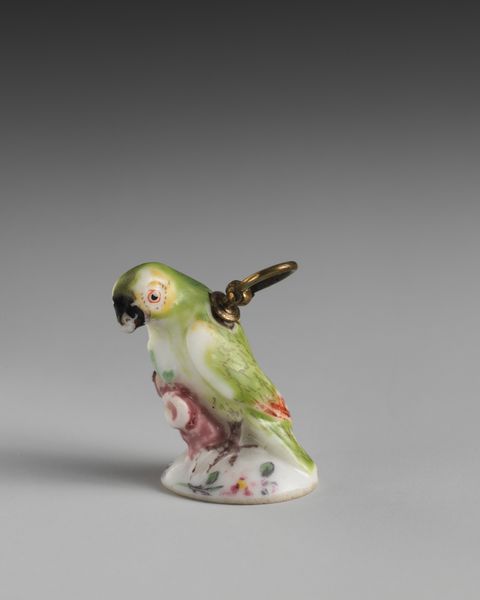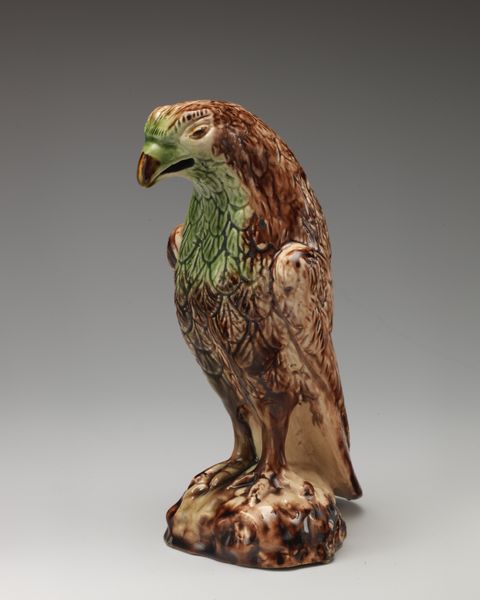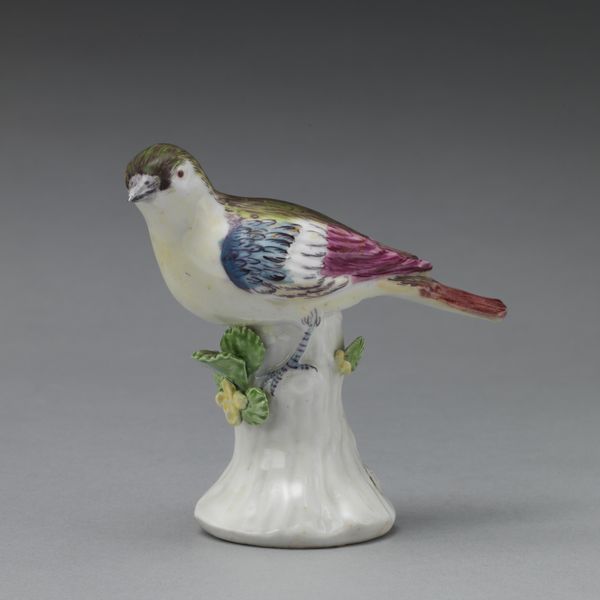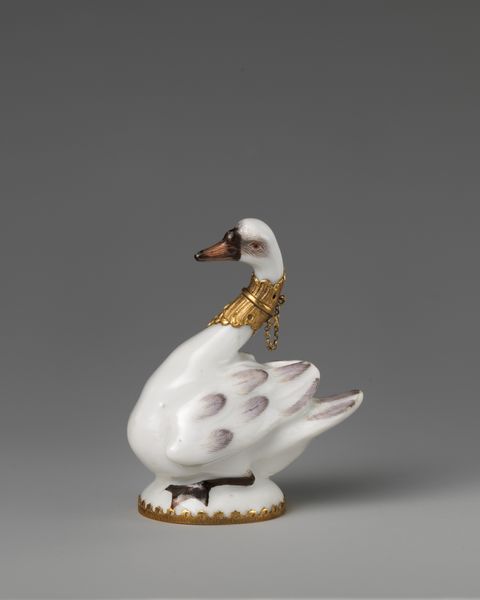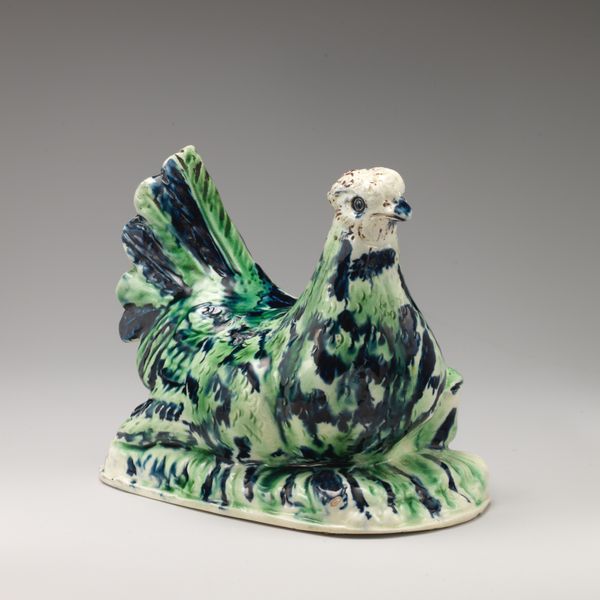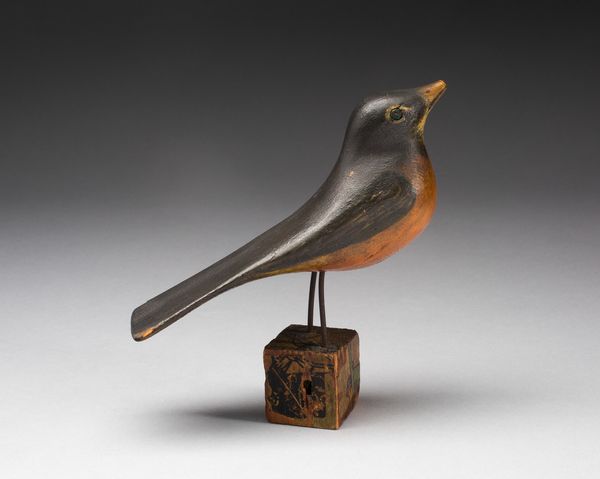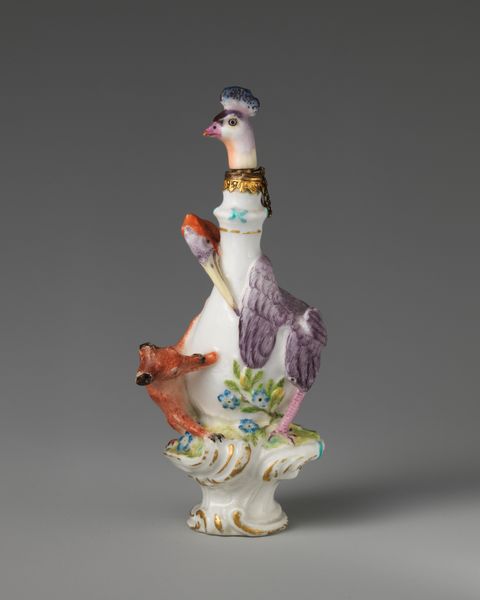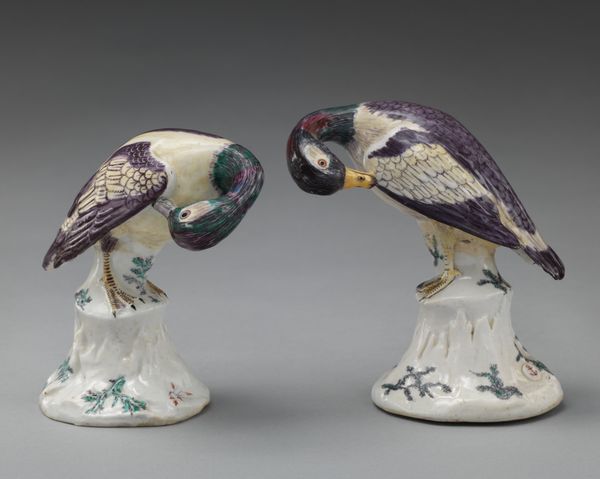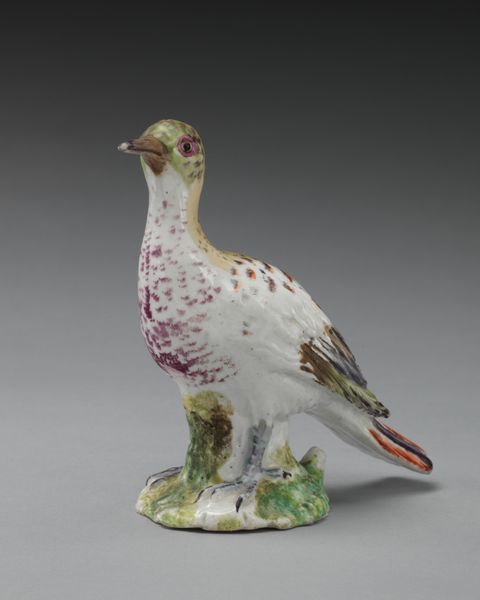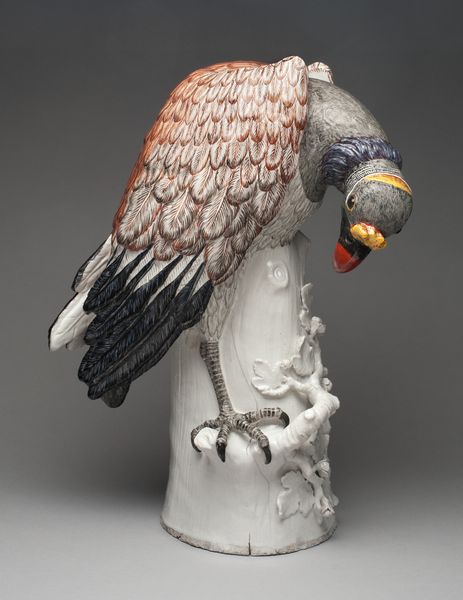
ceramic, sculpture
#
ceramic
#
sculpture
#
decorative-art
#
rococo
Dimensions: Height: 4 1/2 in. (11.4 cm)
Copyright: Public Domain
This delightful bird whistle was made in England, likely in the mid-18th century, by a ceramicist working in the style of Thomas Whieldon. It's earthenware, formed in a mold and enlivened with colored glazes. What's so interesting here is the way that making something both beautiful and functional puts pressure on the craftsperson. The glazes applied to the bird are carefully chosen to suggest a lifelike plumage. The maker certainly wanted to create something visually appealing, but there’s no doubt that the real purpose of this object was to make a sound. Consider how the need to make a whistle affects the form. The tail is blunt, not tapered as it would be on a real bird, because it is a mouthpiece. Ultimately, this combination of sculpture and utility makes it a fascinating example of the applied arts, in which beauty and function come together in a single object.
Comments
No comments
Be the first to comment and join the conversation on the ultimate creative platform.

